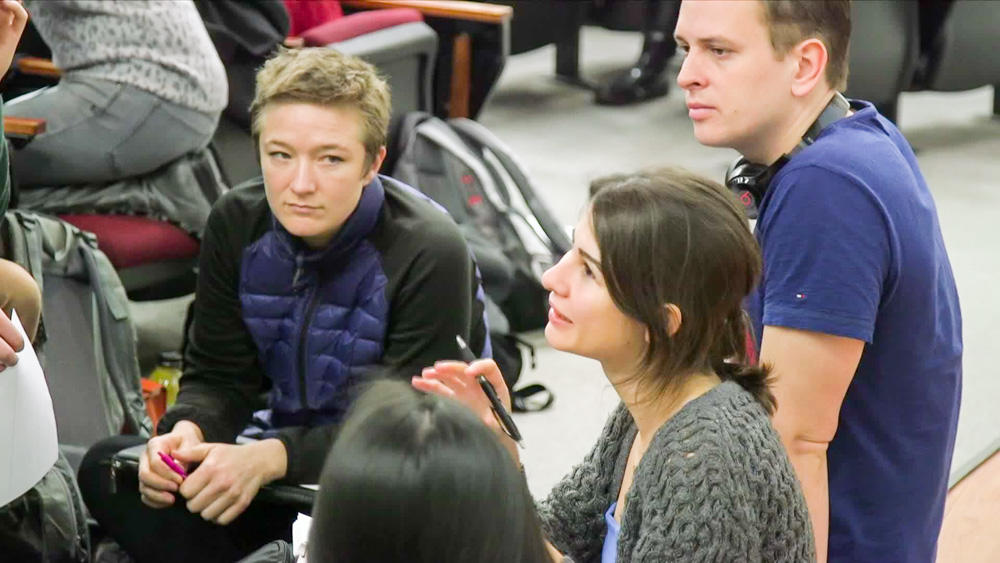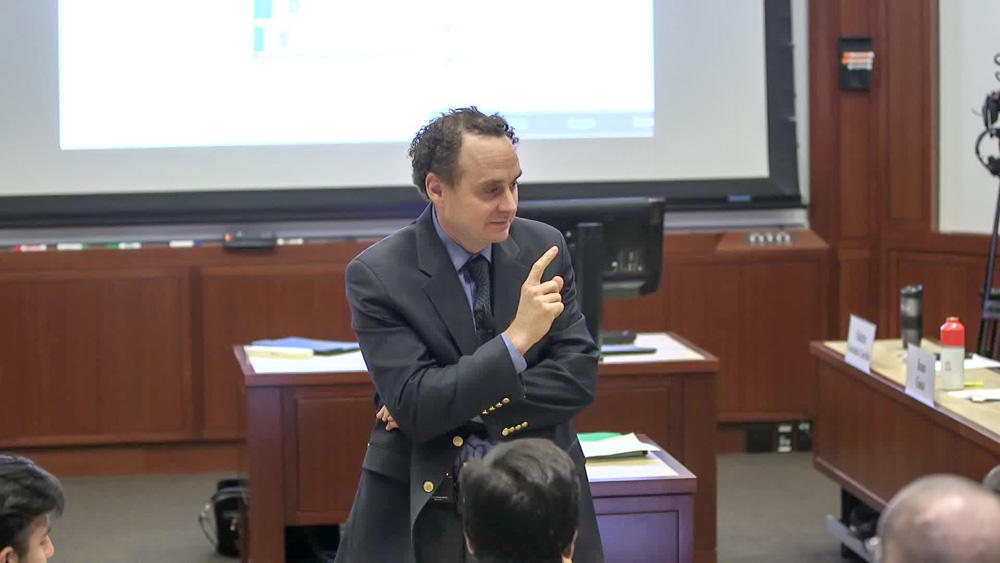Instead of viewing each class session as an independent, stand-alone component, some lecturers effectively weave together material across classes to create a coherent learning trajectory for students. As Brett Flehinger advances from topic to topic, he makes transparent for students his thinking about the specific curriculum choices. In this video, Brett describes how he uses his syllabus as an “atlas” to elucidate links between classes and concepts. He encourages his students to do the same.
Encouraging Students to Put Each Class in Context with the Broader Course
Instructor
Brett Flehinger, Lecturer on History
Student Group
Undergraduate
School
Harvard College
Course
American Populisms: From Thomas Jefferson to the Tea Party + Trump
Group Size
38 students
- Plan backwards. Identify what students should know and be able to do by the end of your course, and then break down those course objectives into smaller parts that have knowledge and skill components. Consider scaffolding course objectives so that students master foundational skills first and then graduate to more challenging ones.
- Make explicit connections, tying together ideas and concepts covered throughout the course. The alternative -- learning ideas in isolation -- reduces opportunities for application and curbs deeper understanding
- Help students understand your thinking by asking and answering questions such as: “Why do you think I assigned this reading?” This works to unmask your curricular decisions so that students can focus their energy on analysis and application.
- According to Bransford, effective teaching strategies help students make connections. Being able to recognize connections and patterns is a trait of expertise, and Bransford recommends that instructors expose students to the major features of a subject domain as they would arise in a disciplinary context (Bransford et al., 2000).
- Anderson and colleagues cite evidence to conclude that transfer depends on where student attention is directed when learning. They recommend that more time be spent instructing students about relevant transferable skills, which suggests that organizing information conceptually and highlighting connections across course content can help facilitate transfer (1996).
- Vanderbilt's Center for Teaching has a great summary of the Understanding by Design framework established by Wiggins and McTighe
- In this IDEA Paper, L. Dee Fink elucidates a powerful model of "Integrated Course Design"




